For dogs, cats, and many other pet species, dental health plays a key role in establishing overall wellness. Poor oral health leads to pain, decreased eating, chewing, and playing ability, and dangerous systemic infection. February is National Pet Dental Health Month, so the Envision More Veterinary Ophthalmology team is getting in on the action and sharing why dental health is important for pets, and how some dental issues may affect your pet’s eyes.
Dog and cat dental health
The most concerning dental issue in dogs and cats is called periodontal disease—the progressive destruction of gum, tooth, tooth ligament, and jaw bone tissues that results when tartar and bacteria build up on teeth and below the gum line. By age 3, more than 70% of dogs and cats have early disease signs, which will progress over time and lead to chronic pain and reduced quality of life, if not properly addressed.
Periodontal disease signs in dogs and cats include:
- Yellow or brown tartar buildup on teeth
- Red, bleeding, or swollen gums
- Difficulty chewing, dropping food, or preference for soft food
- Drooling
- Pawing at the mouth
- Loose or missing teeth
- Reduced interest in play or chewing
- Behavior changes—irritability, withdrawal, neediness
Other dental conditions that affect dogs and cats include tooth fractures or excessive tooth wear, tooth resorption in cats, tooth root abscesses, jaw bone cysts, unerupted teeth, and retained baby teeth.
Dog and cat oral health maintenance
Periodontal disease can be controlled with regular professional dental cleanings performed by your primary veterinarian. During an anesthetized dental cleaning, the following steps take place:
- Scaling
- Polishing
- Dental X-rays
- Complete oral examination
- Tooth extractions and other treatments as needed
Daily oral home care is necessary to keep teeth clean and healthy between professional cleanings. Toothbrushing is the gold standard, and can usually be accomplished with patient, positive training methods. Ask your veterinarian to demonstrate toothbrushing for your pet, or to recommend additional oral health products that may help reduce plaque and tartar buildup.
Tooth root abscess in dogs and cats
Ignoring your pet’s dental health can have serious, long-term consequences, including kidney, liver, or heart damage from deep bacterial infections. Your pet’s oral health can also affect their eyes, which is especially problematic for pets with existing ocular disease. The large premolars and molars near the back of the mouth have long roots that end right underneath the eye socket, separated by only a fragile, thin bone layer. Infection around one of these tooth roots (i.e., a tooth root abscess) can travel into the eye socket (i.e., the orbit) and create a host of problems.
The orbit is a limited space, so any invader will displace the eye. The swollen tissue and inflammatory debris from a tooth root abscess can push the eye forward, left, or right in the socket, and give the illusion of an enlarged eye, which is typically not the case. Vision and pressure inside the eye are typically normal, but some pets cannot completely blink, which exposes the cornea to the elements, and can lead to corneal ulcers. In severe cases, or in pets who have pre-existing dry eye or other corneal conditions, exposure ulcers and subsequent infection can lead to eye loss.
Dog and cat tooth root abscess treatment
A tooth root abscess commonly occurs in pets with a displaced eye and painful jaw opening. An anesthetized dental procedure to remove tartar, assess teeth and tooth roots with X-rays, and remove affected teeth is the ideal treatment. If the area is not already draining, your veterinarian can create a small hole between the orbit and mouth to release pressure and obtain a sample for culture. Antibiotics and anti-inflammatories can help clear remaining infection and swelling, and eye lubricants can help protect the cornea in the meantime.
Not every space-occupying orbital lesion is related to dental health—a protruding eye can be the result of a tumor, inflammatory disease, or sinus infection. If dental treatment does not reveal a tooth root abscess or resolve the problem, a CT scan is usually necessary.
Rodent and rabbit dental and eye health
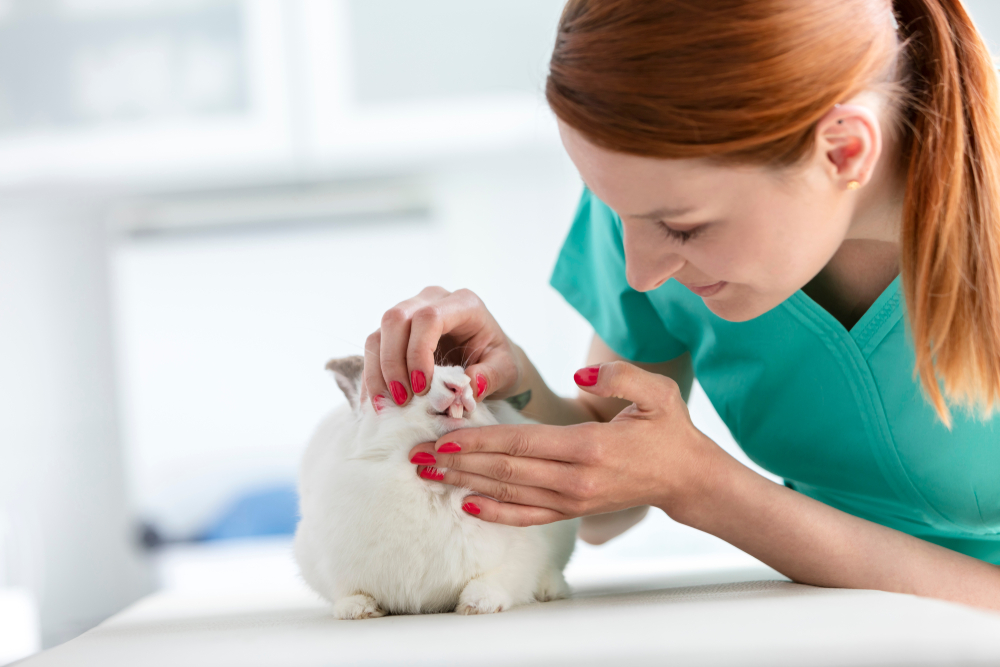
Rodents and rabbits can also experience eye problems caused by dental issues. These small mammals’ teeth grow continuously and are worn down when the mammal chews and eats. Improper diet, lack of chewing items, or abnormal tooth or tooth root shape can lead to overgrown teeth whose roots push up into the orbit. Treatment involves regular tooth trimming, or tooth removal in rare cases.
Contact your primary veterinarian if you have questions or concerns about your pet’s dental health. For eye health questions, or to schedule an ophthalmology appointment, contact our Envision More Veterinary Ophthalmology team.


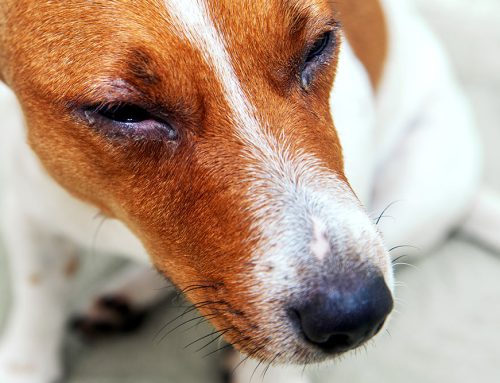
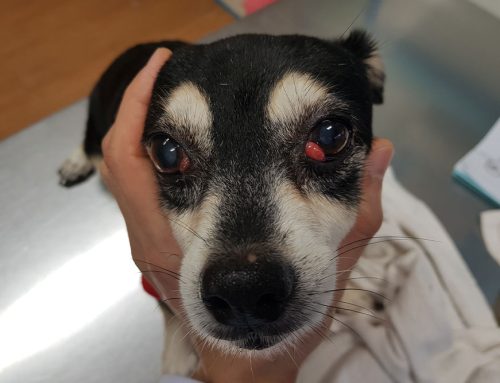
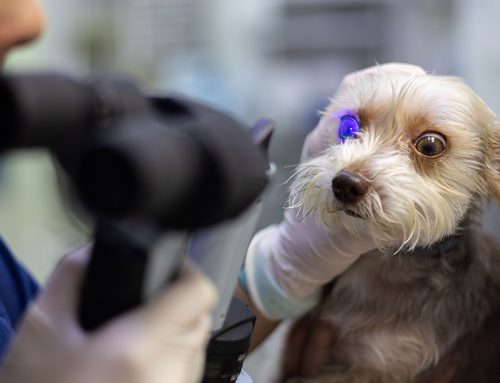
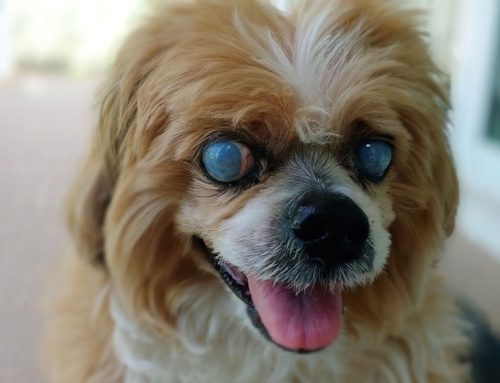

Leave A Comment